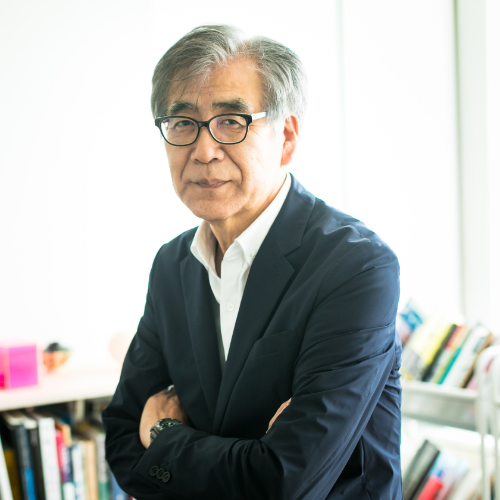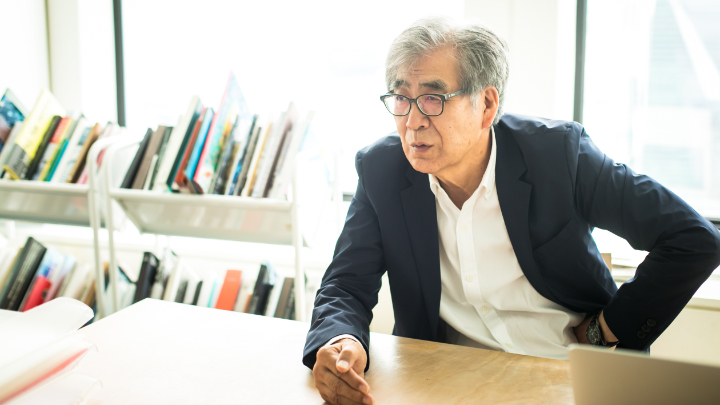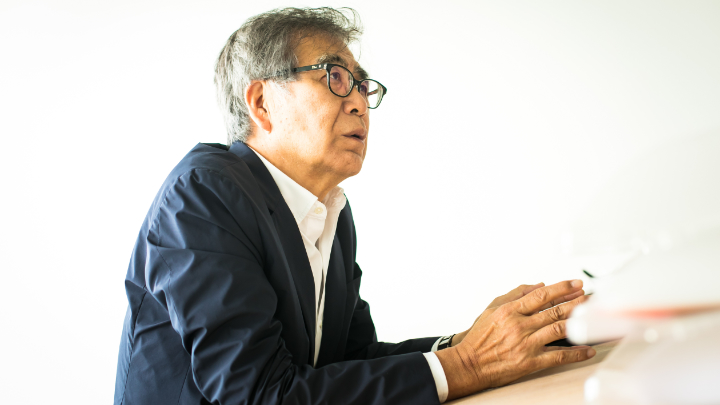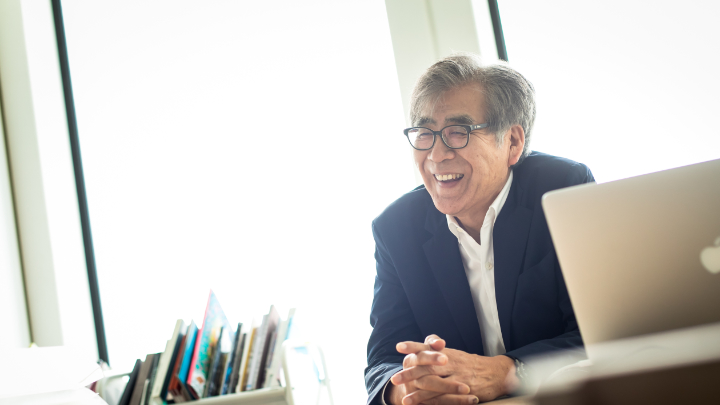




























Fumio Nanjo | Director, Mori Art Museum


Fumio Nanjo has been director of Mori Art Museum since November 2006. Prior to taking the directorship at the Mori, he had served as the museum’s deputy director (2002-2006), after working with cultural organizations including the Japan Foundation(1978-1986). His main achievements include commissioner of the Japan Pavilion at the Venice Biennale (1997), commissioner at the Taipei Biennale (1998), member of jury committee of the Turner Prize (1998), artistic director of the Yokohama Triennale 2001, artistic director of the Singapore Biennale (2006/2008), General Director of Kenpoku Art (Ibaraki Pref., Japan /2016), and Curatorial Director of Honolulu Biennual(2017). He graduated from Keio University in the faculty of Economics(1972) and Letters (Philosophy, Aesthetics and Science of Arts, 1977). Publications include Asian Contemporary Art Report: China, India, Middle East and Japan (2010) and A Life with Art (2012).
Today, diversity is under threat in cities across the world, and confrontation is picking up speed. Conversely, at ICF we insist strongly on the importance of dialog, and have been gathering together curators and artists from home and abroad, especially from the different parts of Asia that are pursuing their own unique paths to development, and we have been holding many discussions about the city as a receptacle of diverse values. We interviewed Fumio Nanjo, director of the Mori Art Museum, who has often spoken of how art “brings opportunities to reconsider the world in a new light”, discussing the art and technology that a philosophy of symbiosis brings, the importance of dialog between Asia and the West, and what Tokyo needs to do to promote that symbiosis.

Since Aristotle, science has developed by classifying things into groups. However, in the reality that modern science has shown us, it isn't possible to draw clear lines between things. For example, enemy and ally, good and evil, inside and outside — things that we thought we understood — if you actually look into them, it's not simple to classify them. The boundaries of the problems are ambiguous, and each side is related to the other. In other words, the real world's economy, society, nature, environment, these are ecosystems which were established by heterogeneous elements reliant on one another. It can be said that even if we classify those elements, we don't make any process towards solving the problem.
That's why there is something thought-provoking about the word “symbiosis”, which is the keyword of ICF 2017's first day: “Art and Science Session —Extending human function and a world of designed symbiosis—”. It's because classification, the start point of science, cannot fully explain the real world in its complexity. In short, I suspect that even with science in its modern state, the discussion will move forward to taking one more look at these problems, that we might not be able to find the truth simply through classification.
I think that artists who make pieces that use technology do have a relatively high affinity for them, but it's actually artists at the opposite extreme, artists who are extremely analog in their approach, who have also the greater potential to build cities together. That's because rather than simply say that a new sort of technology has been created, or that this sort of thing has been discovered with this sort of science, they can offer society a philosophical way of thinking that looks again at the fundamental meaning of these sorts of developments.
The artist Yukinori Yanagi, who appeared at last year's ICF, declared that “Most people say things like ‘art serves society’, but art doesn't serve any purpose. Artists don't think like that.” Personally I think that sort of change of mindset, a sort of paradigm shift, is extremely important. To put it another way, it means that we're discussing science with reasoning, but there are times when questions a step ahead, like “what are we doing this for?” are necessary. For example, the scientists who built the atom bomb worked diligently at their research, and probably believed that it was an important experiment, but I think that looking at that from the outside and asking questions from the perspective of “Do you know what the work you are doing will mean for humanity?” was required. When we develop technology and seek to expand it, the perspective of an outsider is important, and I feel that in fact, artists are taking on that role. I think that that sort of intuitive thinking will be in demand, and that artists will develop a symbiosis with the city.
Now with the development of AI and biotechnology, ethical questions are becoming more important, and art can provide a different set of criteria for ethics. This might be a bit of a digression, but if you have a young person doing something bad, saying “what you're doing is not cool” is more effective than saying “obey the law.” What “not cool” is is a matter of aesthetics. In other words, “this other thing is more cool” is an aesthetic recommendation that says that this other thing is more attractive.
If we pursue sustainability in a society where technology is developing further and further, where AI is progressing, expanding and becoming more complex, an artistic way of thinking will be important for maintaining diversity. I feel that this has a particular civilizational significance for urban design and the ICF, which created a space where science and technology professionals and people from a creative background can come together and transcend the boundaries of their fields to exchange opinions.

Singapore, for example, is a city where you can feel symbiosis. As it's Asia, white people do not have any special status. On the other hand, people of Chinese descent are a large majority, but there are also many Indians and people from a Malaysian background too. In that way, there isn't any sense of superiority or inferiority depending on race.
A city that conveys symbiosis in a different way is New York, perhaps. As well as racial symbiosis, occupational symbiosis is also important, and if we take the creative industries, we have music, design, advertising, films, every kind of occupation is gathered together. Each of those is building reciprocal relationships, and there is also the advantage of being able to find sponsors easily, which becomes a big motivation for creative people to cluster in New York. For artists and creators, creating something is meaningless unless they can get people to look at what they have made. The distance between the places of production and presentation, in other words, between the creator and the customer, has to be small. New York is a city where that has been made a reality, and so it is a city where a symbiosis has developed naturally between different industries.
Recently people are saying that AI is going to take jobs away, but it's a bit ridiculous to be worrying about that isn't it? I mean, essentially mankind developed technology to live more comfortably, so if we become able to get by without doing jobs, that's mission accomplished. Rather, what humanity should do when that happens is creative play — culture and art, in short. I think that the cities where it is easy to pursue creative activities will survive.

If we look at creative businesses, I think that Tokyo has a lopsided symbiosis. In Tokyo there aren't enough sponsors, venues or residences, so the ecosystem hasn't established itself. In Tokyo, even if we look at it in terms of the number of people, or in terms of the amount of money, there aren't as many sponsors as in New York, nor as many galleries. However, people like to enjoy culture and the arts. So the number of people who visit art galleries is among the largest in the world.
Tokyo does not have many art galleries. There are almost no art galleries dedicated to individual artists, or specializing in architecture, film, or crafts. I think that Tokyo needs more specialized art galleries displaying a narrow selection of work. The music industry is in a similar state, I think. The platforms and support systems are insufficient, and it's clear that the musicians are struggling.
In the past, if creators like Katsushika Hokusai went out to the regions, there were patrons in each of those areas who would let him lodge there, sort of like what we would call an artist in residence today. While he was there, the patron would say “Hey, show me some interesting art”, and get him to paint a dragon on the roof of a nearby temple or something. Those kinds of pictures still remain, and they've become treasures of the towns. In today's Japan the number of patrons who can become sponsors to an artist like that has really dwindled. Of course, patrons aren't the only key to the creative industries, but sustainability is very important for an artist's work, so I think that systems that can support talent and provide financial maintenance are essential.
To elaborate on this, what is necessary is for artists to have an ecosystem that supports the creative cycle, such as being able to obtain economical clothes, food and housing, meeting other creators that provide inspiration, having venues for production and presentation, and there being many critics and curators who will evaluate their work. That's what I think we need more of in Tokyo. This sort of support doesn't just come from the creative industries’ sponsors, but from financial, manufacturing, and various other industries in reciprocal relationships. Sure enough, I think that diversity, as well as an atmosphere of connecting, sharing and openness is vital.

To talk about symbiosis, we can say that the third day of the ICF, “International Exchange Fund Asia Center Session — Innovation for Happiness —” is deeply significant. This is because Asia is by nature a sea of diversity. Asia has a diversity not only of races, but of religion and history too. That is a valuable resource for art. Essentially, culture is something that, if everyone is facing in the same direction, cannot be said to be rich. For example, in totalitarian or autocratic states, even if there are many artists drawing propaganda pictures, we can't call that rich. Rather, it's when different artists are producing different work that we can say a culture is rich. Asia's diversity conveys the potential for symbiotic cities.
Now, one of the art scenes that is attracting the most attention is Indonesia's. China and India have led Asian art up until now, but recently the art scene in Indonesia has been developing rapidly. Indonesia forms its culture from a mix of peoples and religions, and that is the base of cultural diversity.
I'd like Asia to be on a level with the West. The other day I went to Art Basel. In the past over ten galleries from Japan used to exhibit, but this time I could only confirm two or three. Then when I asked European gallery operators about it, they said that Japanese and Asian galleries should exhibit at Art Basel Hong Kong. That Asian galleries should appear at Asian art fairs sounds certainly sounds reasonable, but I had my doubts over whether it was okay that European collectors would not see Asian works at Basel. At the same time, I thought that isn't dialog with others the essence of art? Can we say that European culture is truly rich enough without the influence of Asian art?
Just looking back on history, as with precedents like Chinoiserie and Japonism, Europe developed by constantly incorporating culture and ideas from outside. That tenacity makes Europe strong. The stronger that ideas of closing off our own territory become, the more our culture loses resources. Conversely, the more we participate in cultural exchange the closer we turn towards symbiosis and richness. The ideal is not for Europe, America or Asia to be proud, nor to humble themselves, but to be able to speak on an equal footing. In truth, this is something obvious. Through the space that is the ICF, I hope that little by little we can make that a reality.
